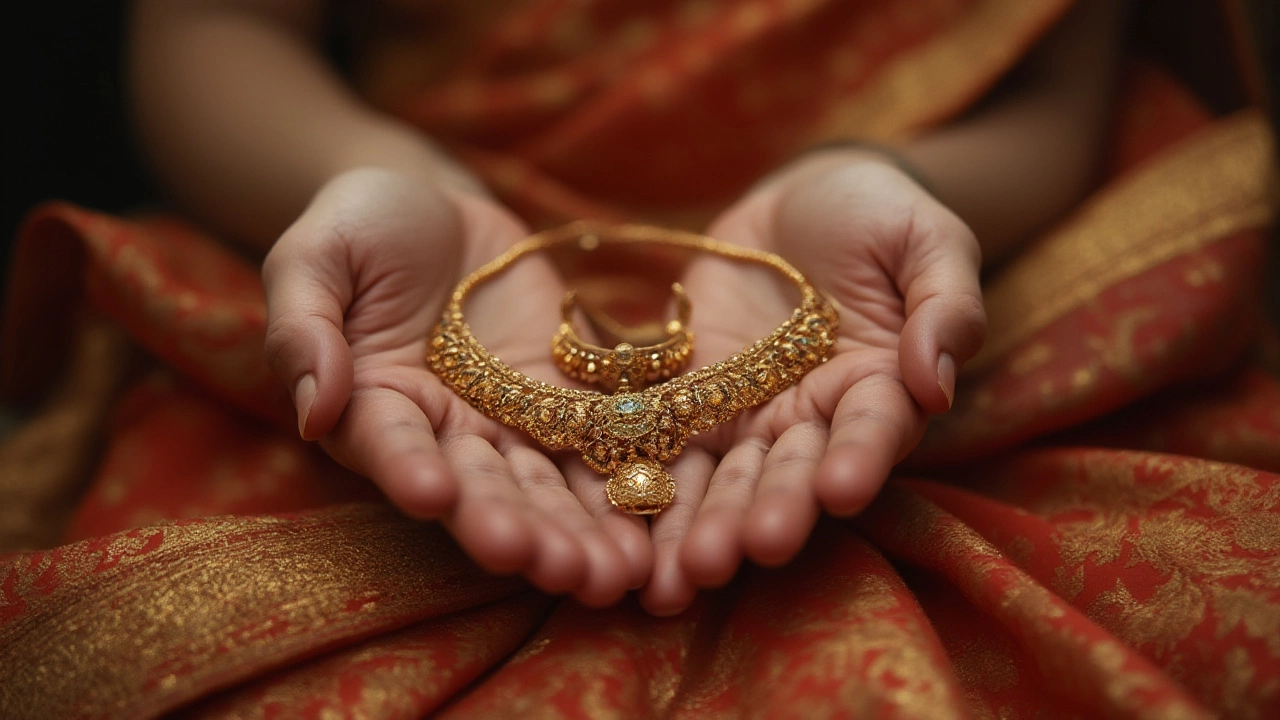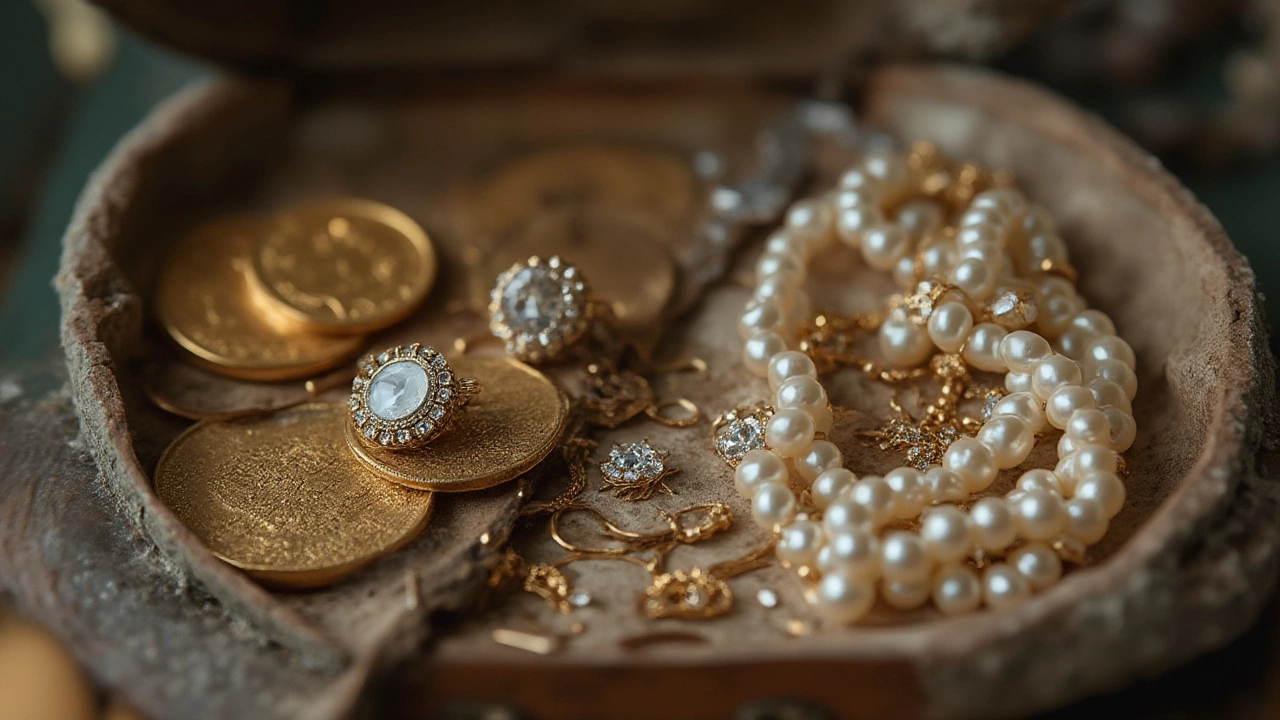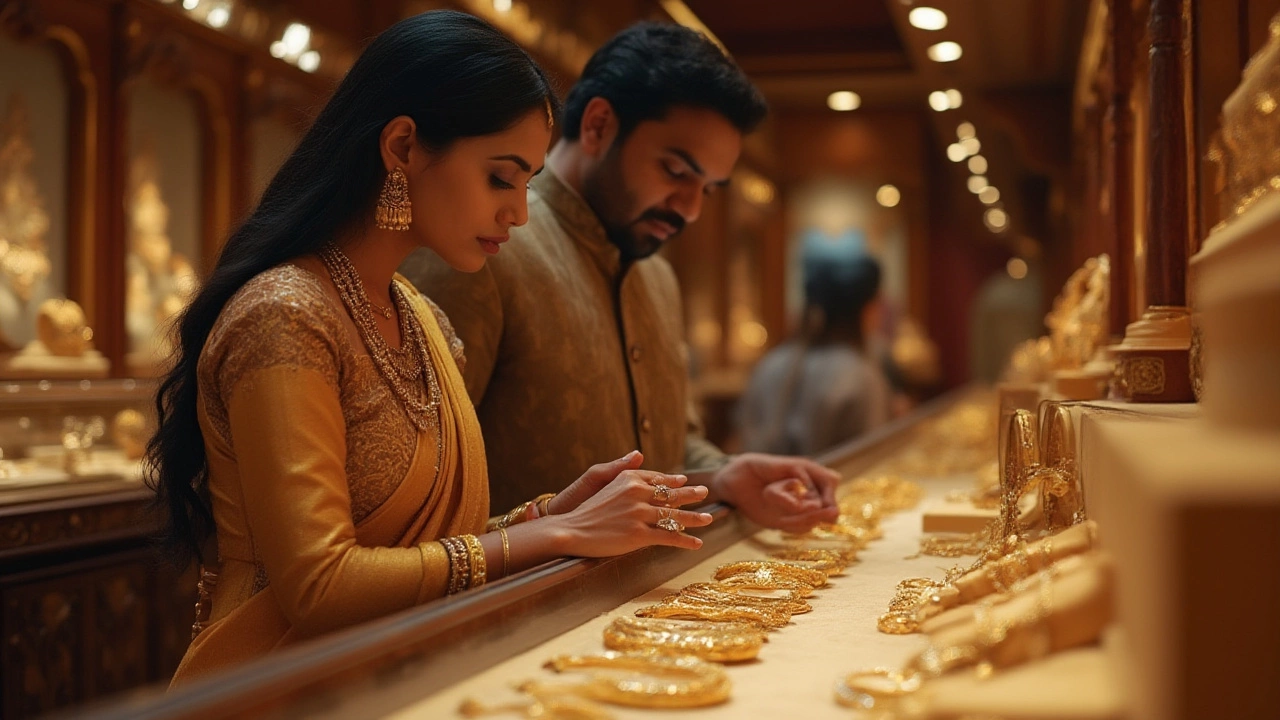Let’s be real: most of us buy jewelry because it’s beautiful, not because we expect it to outpace stocks or buy us a yacht one day. Still, a bunch of folks—myself included—can’t help but wonder: does jewelry ever really hold its value over time, or are we just gifting our future selves a pile of sparkly trinkets worth a fraction of what we paid? The truth is, not all jewelry is created equal. Sure, you can spend five figures on a necklace, only to see it drop in value like a new car flying off the lot. But there’s a sweet spot for those who want something that lasts—something you can hand down to your daughter or son someday, and know it’ll still be worth something significant. I’ve done the digging, talked to real jewelers, even pestered an auction house expert, and boiled down what actually works if you want your jewelry to stand the test of time and money.
The Key Materials: What Actually Keeps Its Value?
Out of all the shiny stuff in the jewelry world, a few materials always get respect where it counts—basically, in the resale or appraisal market. Gold is the old reliable; it never rusts, corrode, or goes out of style. Sure, prices swing up and down, sometimes a lot, but genuine solid gold in the standard 22K or 24K form pretty much acts as a little insurance policy against inflation. If you grew up in a family like mine, you already know gold bangles handed down from grandma are still worth something, maybe even more as gold prices climb. Platinum deserves a mention, too, although it’s tricky: it’s rare, hard, and doesn’t tarnish, but its resale value can lag behind gold in certain places, especially if the buyer doesn’t care about brand or provenance. Silver looks pretty, but its lower price and tendency to tarnish means it’s just not in the same league as gold or platinum when we’re talking investment value.
Then there’s the diamond factor. Diamonds are the ultimate crowd divider when it comes to holding value. The best advice I ever got was that diamonds hold value only if they tick a lot of boxes: certified, high clarity, great cut, and ideally in the 1-carat or more club. Tiny stones, cloudy stones, or those riddled with inclusions? Not so much. Gemstones like sapphires, rubies, and emeralds sometimes keep value—especially untreated stones with excellent provenance and color—but unless you’re an expert, it’s easy to overpay or make a mistake. Another hot tip: designer jewelry from established names (think Cartier, Tiffany, Van Cleef & Arpels) sometimes holds value, not so much for the stone or metal but for the brand. People will pay a premium, especially if you still have the certificate or original box.
Why Most Jewelry Loses Value (and How to Avoid That Trap)
I hate to break it to you, but walk into a regular mall jewelry store, spend a couple thousand, and odds are high you won’t see much of that back if you try to sell it even a few years later. Mass-produced pieces lose value fast, mainly because of hefty retail markups (sometimes 200%+). And here’s the kicker: the second you walk out the door, it becomes “used” jewelry. The only value left is in the gold or gems, not the brand new sticker price you paid. I once saw a friend try to pawn a trendy nameplate necklace—she paid $350 for it, got offered $40. Ouch.
Custom-made or trendy pieces have the same problem. Sure, they’re unique, but unless they’re from a hot designer or use high-value materials, good luck getting more than melt value. Even vintage or antique pieces are hit or miss unless they’re signed by a famous maker, have rare stones, or absolutely killer design. That's why collectors obsess over hallmarks, certificates, and condition. If your piece is scratched, repaired (especially badly), or missing original packaging, its value slides further.
How do you avoid the trap? Aim for timeless classics with broad appeal and proven market demand—think classic gold chains, solid bangles, or diamond studs. Avoid personalized, overtly trendy, or highly customized pieces unless you’re OK with sentimental, not resale, value. Try to buy from reputable shops or auction houses that can verify everything with paperwork. And if you can, buy closer to the metal’s value—estate sales, secondhand shops, or auction platforms can offer killer deals compared to retail.

Brands and Pieces That Buck the Trend
Here’s where it gets interesting: sometimes jewelry from big names defies the usual rules and keeps its value—or even grows. Cartier’s Love bracelet is a classic, and vintage ones from the ‘70s can fetch more now than when they were new, mostly because collectors are obsessed with the old screw action. The Van Cleef & Arpels Alhambra collections or anything with those famous clovers attracts buyers looking for both style and status. Cartier Tank watches sometimes count, too, since they’re half jewelry, half investment piece.
Tiffany’s classic engagement rings, especially with stones that come with all the original paperwork, tend to hold their price surprisingly well. What these pieces have in common is iconic design, brand recognition, and a rabid collector base. That means when anyone in London, New York, or Dubai wants to upgrade or cash out, there’s always a buyer who recognizes the brand immediately. One big tip: always hold onto the box, bag, receipt, and any certificates. They can boost resale value way more than you’d think—sometimes by hundreds or even thousands (seriously, I’ve seen people turn down deals because a box was missing).
On the flip side, “brand-inspired” jewelry or pieces that just copy famous designs never have the same power. Nobody is paying full resale for an item just because it looks like a designer brand—buyers care about authenticity.
Tips for Buying Jewelry That’s More Than Just Pretty
If you’re shopping with an eye on value, it makes sense to be picky. First, ask for all documentation up front. An appraisal doesn’t mean much if it’s just a one-page form from the store; you want certificates from big organizations (GIA, AGS, IGI for diamonds, for instance) or proof of gold purity. Don’t be shy: if a seller can’t prove the details, walk away. Second, go for the highest purity you can afford—22K or 24K for gold, or certified stones with good cut, color, clarity, and carat (the “Four Cs”). Shape and style matter, too: classic pieces like a plain gold bangle, hoop earrings, or solitaire pendant have universal appeal.
If you want something flashier or unique, stick with designs or makers known for keeping value. Estate and vintage shops, especially those that focus on big-name designers, are gold mines for good deals—just make sure the piece is in top shape and that you’re not overpaying for a little-known brand.
Watch out for jeweler “upgrade” offers—sometimes stores say they’ll buy back an old piece at “full price” if you upgrade, but the fine print usually means you’re still coming out behind unless you really want the newer item. One last tip: ask about repair history, especially for old or antique pieces. Anything that’s been heavily fixed tends to lose value unless the repair is top-notch and hard to spot.

What the Future Holds: Trends and New Perspectives
The world of jewelry is changing fast, especially with younger buyers. People want pieces that are ethical, traceable, and sometimes even made of recycled gold. This “green” trend could end up boosting the value of older jewelry, especially if it comes with detailed paperwork or provenance. Some auction houses now list the full chain of ownership, which savvy collectors dig.
Digital authentication and blockchain certificates are starting to pop up for high-value pieces. Imagine scanning a QR code and seeing the full history of your diamond—from mine to showroom. This kind of transparency makes buyers feel safe spending big money and could help certain pieces keep or even increase in value in the future. There’s also renewed interest in natural, untreated gemstones, as labs get better at spotting treatments or synthetic stones. That makes natural, old-school gems more valuable than ever to the right collector.
Here’s the deal: even with all these trends, the basics don’t change. Stick to solid gold, real diamonds, and collectible brands if you care about value. Treat your jewelry gently, hang onto the paperwork, and don’t be afraid to negotiate—whether you’re buying from a shop, online, or at auction. Who knows? That bangle or bracelet might just beat the stock market one day—or at least, make a killer heirloom for the grandkids.



